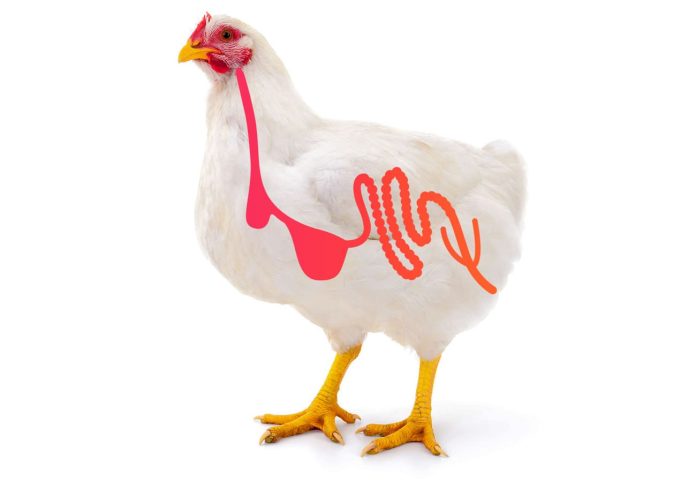

Gut Health Today, Anti-Microbial Resistance (AMR) Tomorrow, indeed it will be a huge problem if we continue using antibiotics as we have done inthe last decades. Current predictions are, that if we do not adapt our use, or perhaps, abuse of antibiotics, then by 2050 worldwide, more people will die because of bacterial resistance against antibiotics than of cancer.
Where does this bacterial resistance against antibiotics come from? Well, in essence, it is quite simple and logical. Every time we use antibiotics, we kill several bacteria.
We will never kill all bacteria though, the most sensitive ones will die, and the less sensitive ones will remain. So, in a way, we are “breeding” for antimicrobial resistance because only the resilient bacteria will remain and consequently multiply again at a later stage, thus growing a new, more resistant population.
Perhaps we should have reversed the title above not AMR Tomorrow, but AMR Today.
Already in 2019, 4.95 million deaths were associated with AMR, out of which 1.27 million were directly attributable.(Source: The Lancet,2022) So, the life-threatening problem is already here and is causing more people to die every year.
The animal husbandry industry is using more than 70% of all antibiotics, of which the vast majority links to tackling digestive disorders like dysbacteriosis and Necrotic Enteritis. Analyzing the cause of these digestive disorders, most of them find their origin in, either intake of pathogens via water, feed, or bedding material, or due to the overgrowth of certain pathogenic microbes in the hindgut of the birds. As our birds have been genetically bred for high productivity, they need to process a lot of feed and waterdaily. This also means a high passage rate through the digestive tract, as the digestive tract can only contain a certain amount of volume. This increases the risk of undigested feed particles reaching the hind, not feeding the birds, but feeding the microbes in the hindgut instead, causing a microbial overgrowth which again results in dysbacteriosis, Necrotic Enteritis, and such. Our traditional response has always been to solve these issues with antibiotics. Yet, a wiser approach could beto try to support the quality of digestion by supporting the natural steps in the process of digestion and trying to strengthen gut resilience.
The good news: when we support and increase our animals’ gut health, and make the gut stronger and more resilient, our need for antibiotics will be substantially reduced.
The first basis, to strengthen the gut and support the process of digestion, should best be a broad approach, critically looking at nutrition, farm management, and general health monitoring. In short, the Feed-Farm-Health approach.
For the feed part, both contentand physical propertiesare important. Content, for instance, choose fast degrading protein sources, with a high digestibility coefficient and limit the total amount of crude protein. Regarding physical appearance, on one hand, a soft, moist pellet is desired to maintain a good level of daily feed intake, yet it also needs to be durable and contain enough structure to stimulate good gizzard development. In cases where the feed is provided in a mash form,also then, feed particle sizeis important. Birds do not like to eat fines, as they consider it dust and again sufficient structure, also in a mash feed is important for proper gizzard development. The better the gizzard has been developed, the better the process of digestion will be, thus the lower the risk of digestive disorders.
Farm management is very broad as such, yet often there is room for improvement, looking at simple basic things like cleaning drinking lines and cups, and keeping the birds in their temperature comfort zone, especially in the first week of life. Removal of dead birds and having the feeders and drinking cups at the right height.
Health monitoring does not only involve the basics like biosecurity and proper vaccination scheme. Also, it would be advisable to do gut health scoring. This means sacrificing some birds to check what is going on inside the digestive tract. This can give very helpful information regarding gizzard development, bloating (gas formation by microbes in the intestine), and inflammation. This can give good direction, indicating where to put focus and money.
Fortunately, there are effective non-antibiotic solutions offered in the market, support the reduction of bacterial pressure on the digestive system of animals.Thus, helping the digestive system to maintain its proper functioning.
Preventively used, these products can help to substantially reduce the need for antibiotics and potentially even help farmers to produce completely antibiotic free.
Some examples:
Selko-pH, a product that should be added to the water. It has both a pH-reducing effect, and substantially reduces the number of pathogens, especially gram-negative like salmonella and E.Coli. The recommended dosage will depend on the hardness of your local water source. The aim is to get the PH of the water below pH 4. When below 4, not only gram negatives are being killed, but also, yeasts will not be able to grow anymore.
Selacid Green Growthis an in-feedproduct. Selacid Green Growth is composed of both short-chain fatty acids as well as medium-chain fatty acids, resulting in activity both in the fore as well as the hindgut of the animals. Selacid Green growth is effective against both gram+ and gram- bacteria, so a very broad mode of action.
Another -in feed- or -in premix- product helpful in reducing the need for antibiotics, would be Intellibond Copper in a dosage of minimum of 125 ppm effective copper in the final feed. Copper suppresses bacterial growth. Of course, also copper sulfate could theoretically be used, yet copper sulfate is very reactive, harmful to the vitamins in a premix, and has a negative flavor, so reducing the effect on feed intake, when applied in a high dosage as suggested.
Of course, all these kinds of products will come with a price, yet antibiotics are also quite expensive and as resistance progresses over time, value for money will go down, the more and the longer they are being used.
Another benefit of products like Selko pH, Selacid Green Growth, and Intellibond Copper, they also tend to improve the quality of digestion and in that way, more than pay for themselves as growth rates and feed conversion ratios will improve.
As the above-mentioned products will support the quality of digestion and have a positive effect on the birds’ gut health, mycotoxins will have the opposite effect. Mycotoxins are toxins produced by molds, either during the growing season of the crops used for poultry feed or during storage of these crops. There are multiple types of mycotoxins. Generally, you can say: they tend to suppress the immune system of the bird, making it more vulnerable to all sorts of diseases. Yet, there are also mycotoxins, like for instance Ochratoxin, specifically reducing gut integrity. As mycotoxins are a common issue, worldwide, when aiming to reduce the need for antibiotics, dealing with mycotoxins should always seriously be considered. Fortunately, products like Toxo MX and Toxo XL have been developed, mitigating the negative effects of mycotoxins. Toxo MX with a specific focus on Aflatoxine and Toxo-XL with a broad-spectrum focus. An effective way would be to monitor mycotoxin contamination levels throughout the year, for instance with the Mycomaster device, or via HPLC testing. The Mycomaster may not be exactly as accurate as HPLC testing, yet, the Mycomaster has the advantage, when linked, to the appropriate server, it also supplies the user with a risk profile, based on (anonymous) collected data from other Mycomaster distributed worldwide. Depending on the trends and levels found a certain dosage of mycotoxin binder like Toxo Xl can be chosen. At low risk, 1 kg/MT, up to 5 kg/MT when high-risk profiles apply.
Rather than sticking to working the way we have always done regarding antibiotics, the consumer market really demands from the animal production industry to change its habits and find new ways to produce either with very little usage of antibiotics or better yet, completely antibiotic free.
Of course, saving human lives should be our first and foremost concern and driver to make this change come true. However, we should also realize that it is also a license to produce. If customers do not trust the products of the poultry industry anymore, demand will go down. And with a positive view, early adapters can really differentiate with the product they offer to the market, getting premium prices. There are multiple big players in the market, really requesting antibiotic-free produced meat.
Coming back to the initial issue at hand: the anti-microbial resistance.Research has shown, that if we stop using antibiotics for a longer period, microbes will also lose again their acquired resistance against antibiotics. And that is great news. This means it is reversible. Provided we change our habits, and our ways of working and strongly reduce the usage of antibiotics, not only will we be able to keep antibiotics effective for future human health, but also, in the accidental case when we would need them in animal production, they would still work and give us an effective solution and value for money.
By Dr. Peter Smid, Trouw Nutrition Global













